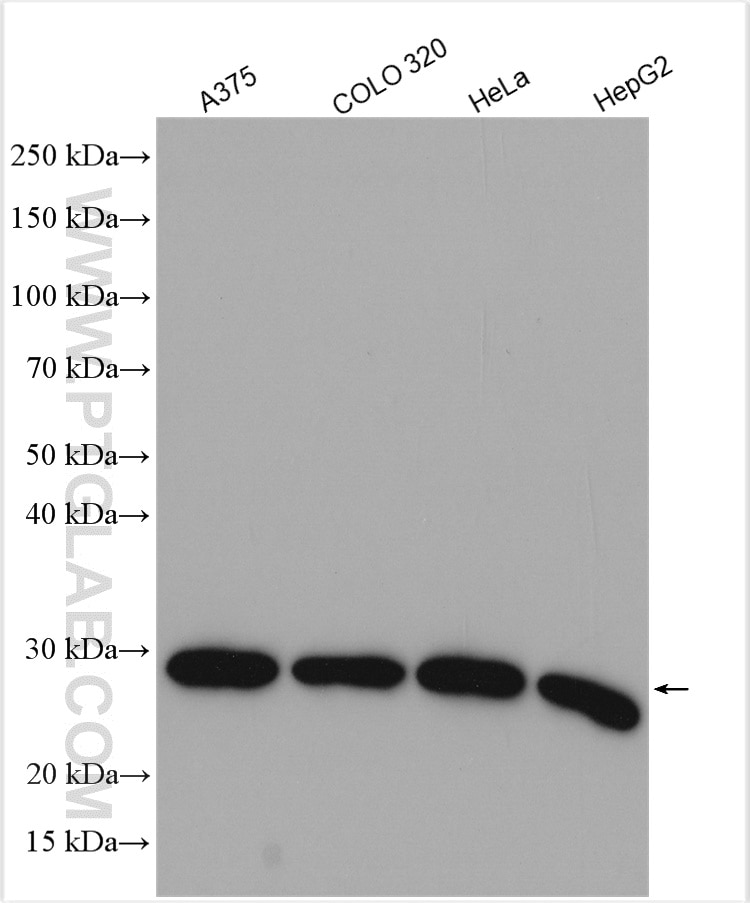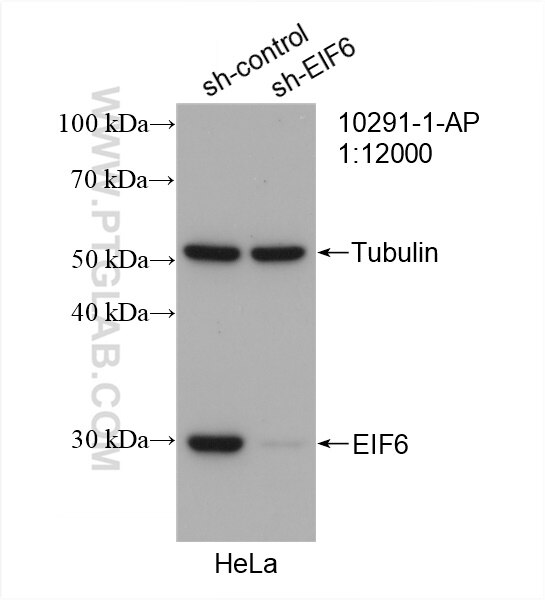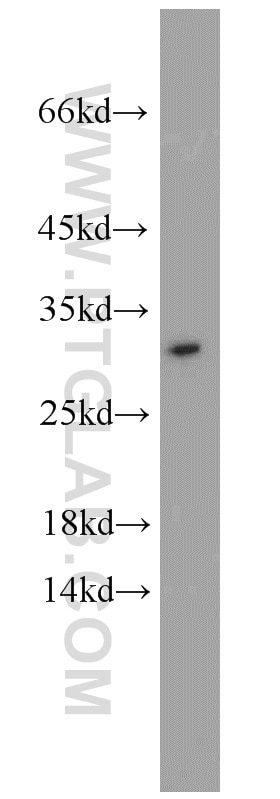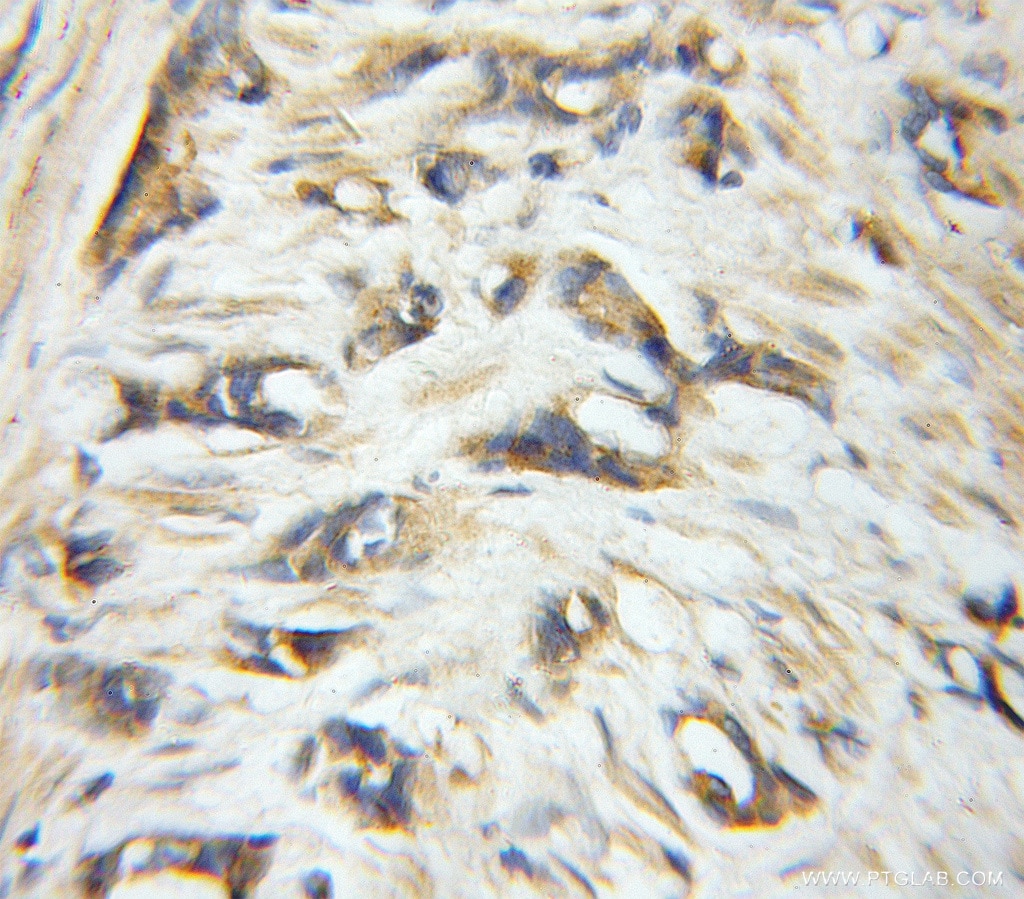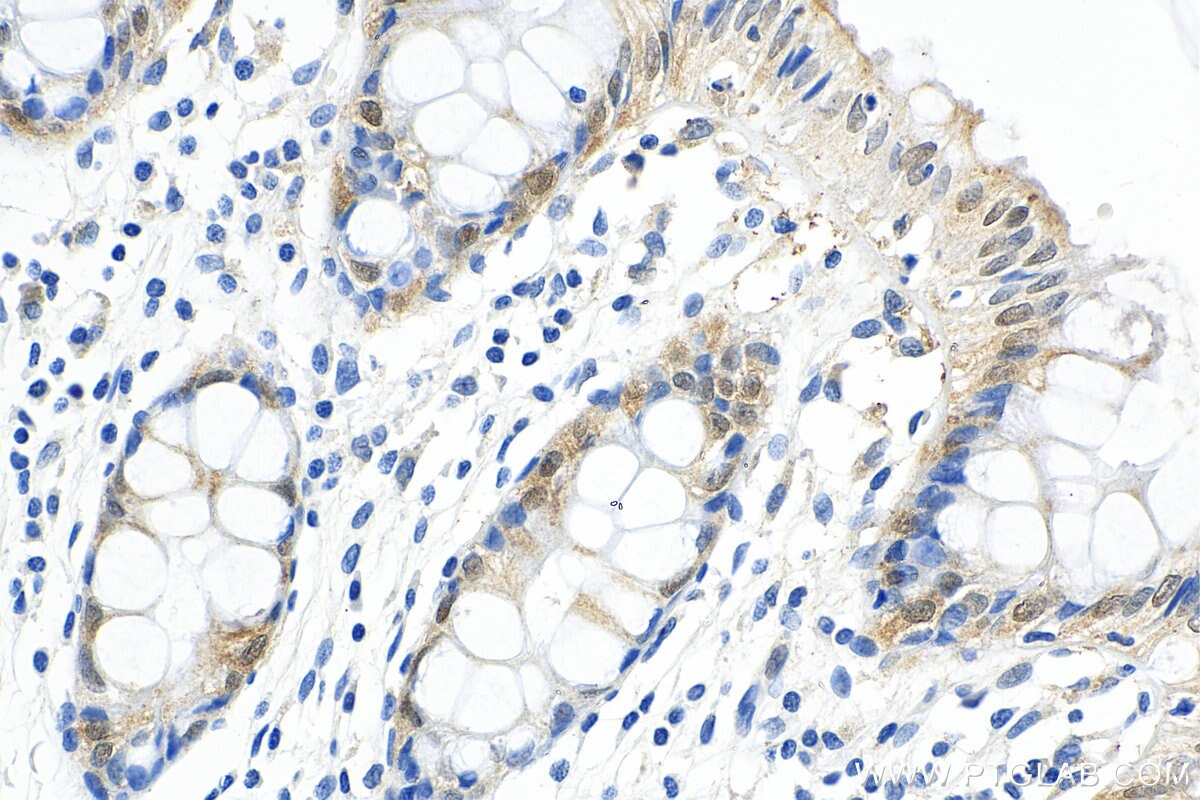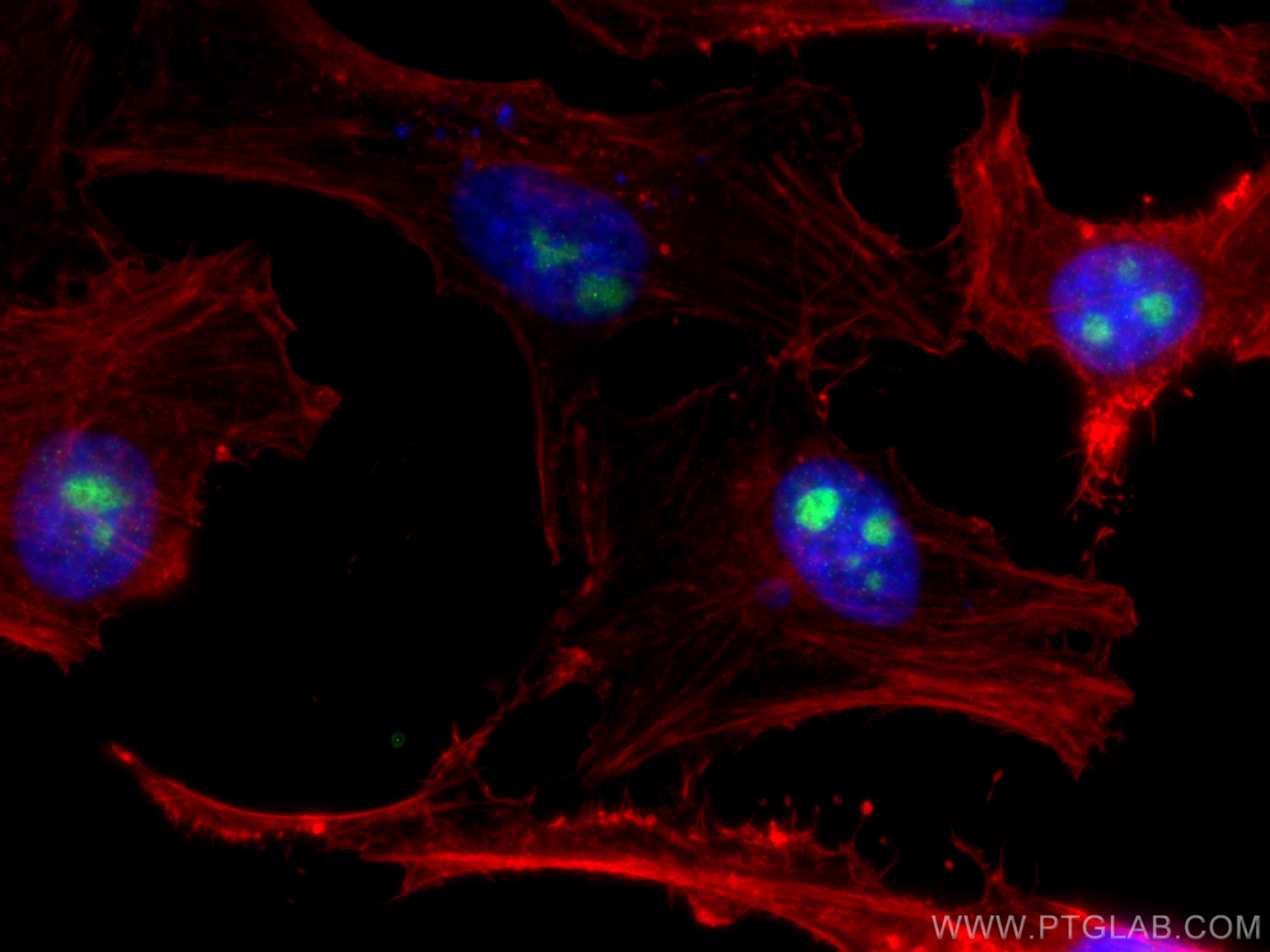- Featured Product
- KD/KO Validated
EIF6 Polyklonaler Antikörper
EIF6 Polyklonal Antikörper für WB, IHC, IF/ICC, ELISA
Wirt / Isotyp
Kaninchen / IgG
Getestete Reaktivität
human, Maus und mehr (1)
Anwendung
WB, IHC, IF/ICC, ELISA
Konjugation
Unkonjugiert
Kat-Nr. : 10291-1-AP
Synonyme
Geprüfte Anwendungen
| Erfolgreiche Detektion in WB | A375-Zellen, COLO 320-Zellen, HeLa-Zellen, HepG2-Zellen, Mauslebergewebe |
| Erfolgreiche Detektion in IHC | humanes Prostatakarzinomgewebe, humanes Kolongewebe Hinweis: Antigendemaskierung mit TE-Puffer pH 9,0 empfohlen. (*) Wahlweise kann die Antigendemaskierung auch mit Citratpuffer pH 6,0 erfolgen. |
| Erfolgreiche Detektion in IF/ICC | HeLa-Zellen |
Empfohlene Verdünnung
| Anwendung | Verdünnung |
|---|---|
| Western Blot (WB) | WB : 1:2000-1:16000 |
| Immunhistochemie (IHC) | IHC : 1:20-1:200 |
| Immunfluoreszenz (IF)/ICC | IF/ICC : 1:50-1:500 |
| It is recommended that this reagent should be titrated in each testing system to obtain optimal results. | |
| Sample-dependent, check data in validation data gallery | |
Veröffentlichte Anwendungen
| KD/KO | See 1 publications below |
| WB | See 10 publications below |
| IHC | See 1 publications below |
| IF | See 2 publications below |
Produktinformation
10291-1-AP bindet in WB, IHC, IF/ICC, ELISA EIF6 und zeigt Reaktivität mit human, Maus
| Getestete Reaktivität | human, Maus |
| In Publikationen genannte Reaktivität | human, Maus, Ratte |
| Wirt / Isotyp | Kaninchen / IgG |
| Klonalität | Polyklonal |
| Typ | Antikörper |
| Immunogen | EIF6 fusion protein Ag0324 |
| Vollständiger Name | eukaryotic translation initiation factor 6 |
| Berechnetes Molekulargewicht | 27 kDa |
| Beobachtetes Molekulargewicht | 27 kDa |
| GenBank-Zugangsnummer | BC001119 |
| Gene symbol | EIF6 |
| Gene ID (NCBI) | 3692 |
| Konjugation | Unkonjugiert |
| Form | Liquid |
| Reinigungsmethode | Antigen-Affinitätsreinigung |
| Lagerungspuffer | PBS with 0.02% sodium azide and 50% glycerol |
| Lagerungsbedingungen | Bei -20°C lagern. Nach dem Versand ein Jahr lang stabil Aliquotieren ist bei -20oC Lagerung nicht notwendig. 20ul Größen enthalten 0,1% BSA. |
Hintergrundinformationen
p27(BBP/eIF6) is an evolutionarily conserved protein that was originally identified as p27(BBP), It functions as an interactor of the cytoplasmic domain of integrin 4 and as the putative translation initiation factor eIF6. p27BBP is found in two pools: one nuclear pool enriched in the perinucleolar region, and one cytoplasmic pool. p27BBP binds to the fibronectin type III domains of integrin 4 subunit (ITGB4), an important functional component of hemidesmosomes, and help link ITGB4 to the intermediate filament cytoskeleton. In vitro and in vivo studies demonstrated that p27BBP is essential for cell viability and has a primary function in the biogenesis of the 60S ribosomal subunit. p27BBP protein is increased in rapidly cycling cells and decreased in villous cells committed to apoptotic cell death. In dysplastic colorectal adenomas and carcinomas, p27BBP displayed a large increase of its nucleolar component and was associated with the nuclear matrix. In particular, p27BBP increased progressively from adenomas to carcinomas and was related to the tumor stage.
Protokolle
| PRODUKTSPEZIFISCHE PROTOKOLLE | |
|---|---|
| WB protocol for EIF6 antibody 10291-1-AP | Protokoll herunterladen |
| IHC protocol for EIF6 antibody 10291-1-AP | Protokoll herunterladenl |
| IF protocol for EIF6 antibody 10291-1-AP | Protokoll herunterladen |
| STANDARD-PROTOKOLLE | |
|---|---|
| Klicken Sie hier, um unsere Standardprotokolle anzuzeigen |
Publikationen
| Species | Application | Title |
|---|---|---|
Cell Stem Cell HectD1 controls hematopoietic stem cell regeneration by coordinating ribosome assembly and protein synthesis. | ||
Exp Gerontol Mechanistic insights into EIF6 as a target of Apigenin in alleviating chondrocyte senescence | ||
Biochem Biophys Res Commun Mitochondrial function is impaired in yeast and human cellular models of Shwachman Diamond syndrome. | ||
Pediatr Blood Cancer Impaired growth, hematopoietic colony formation, and ribosome maturation in human cells depleted of Shwachman-Diamond syndrome protein SBDS. | ||
Evid Based Complement Alternat Med Protective Effects of Scutellarin on Human Cardiac Microvascular Endothelial Cells against Hypoxia-Reoxygenation Injury and Its Possible Target-Related Proteins. |
